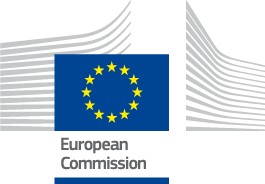

Good Practice Project
While the FLAG was designing its Local Development Strategy, one of the main problems identified by the local community was the lack of coordination in stock management of the nine different ports on the Emilia Romagna coastline. This was highlighted during the consultation process that the FLAG carried out with all the local stakeholders at the beginning of its activity. The FLAG decided to set up a working group, combining efforts from the fisheries and aquaculture sector and local experts, to develop a common management plan for the region. Nassarius mutabilis (sea snail), Sepia officinalis (cuttlefish) and Squilla mantis (mantis shrimp) are three local species covered by the management plan. The local fisheries and aquaculture sector decided to focus on them due to their regionwide presence, their important economic value and the need to protect them to guarantee healthy stocks.
Through a public call, the FLAG selected experts including a cooperative of marine biologists working on the development of fisheries and aquaculture technology innovation (M.A.R.E. Scarl); a national company specialising in mapping and database services for sustainable fisheries management (Kosmoambiente); and the Bologna University. The experts jointly created a socio-economic assessment, collecting and analysing information for guaranteeing accurate data about the status of these three fisheries and defining the optimal guidelines to be implemented by this management plan. During the whole drafting, review and validation process, fishers, fish farmers and owners of local vessels were actively involved. For that, the FLAG organised and ran 10 workshops, with 120 participants from the sector.
This bottom-up approach to participation and identifying relevant experts is new to the region and was managed by the FLAG. Representatives from the national Ministry of Food and Forestry Policies (MIPAAF) were present at the launch of the working group so they could learn more about the methodology. The MIPAAF is responsible for CLLD under the EMFF so there was interest in the methods potential implementation in other Italian regions. Such bottom-up approaches are also being used by the FLAG in tackling two of its other identified challenges: eutrophication and shellfish farming.
This single management plan is the first stock management plan in the region. The final draft was presented and adopted by the stakeholders at the end of 2019. Due to the rapid environmental and economic changes the management plan will be reviewed yearly and updated when necessary.
The plan is divided into three sections, one per local targeted species, and includes new measures such as establishing the minimum size of catches, the locations and maximum daily quotas or the fishing gears and methods allowed.
For increasing the impact of the project and the public visibility of the sector, a communication campaign was carried out. Some elements of the campaign included dissemination activities in the areas around the nine ports on the regional coastline, open workshops, the distribution of communication material, a social media campaign, and four press releases in local media.
This comprehensive approach can be easily transferred across all themes where gathering local knowledge is an added value. For ensuring the better implementation of this inclusive approach, a well-connected community is required, as well as the involvement of the different stakeholders. The FLAG must play an essential role in coordinating the different activities of the stakeholders involved. This was possible only because of FLAG´s previous experience as the main animator of the whole regional area.
Lessons: For making a shared management plan, it is important to involve fishers from the very start of the design. This will lead to better understanding and acceptance of the rules, which will improve the effective implementation.
Contribution to CLLD objective: (e) strengthening the role of fisheries communities in local development and the governance of local fisheries resources and maritime activities.
| Total project cost | €20 000 |
|---|---|
| FLAG grant |
€20 000
|
| Timeframe of implementation | From Sep 2018 to Jun 2020 |
|---|---|
| Sea Basins |
|
| Type of area |
|
| Theme |